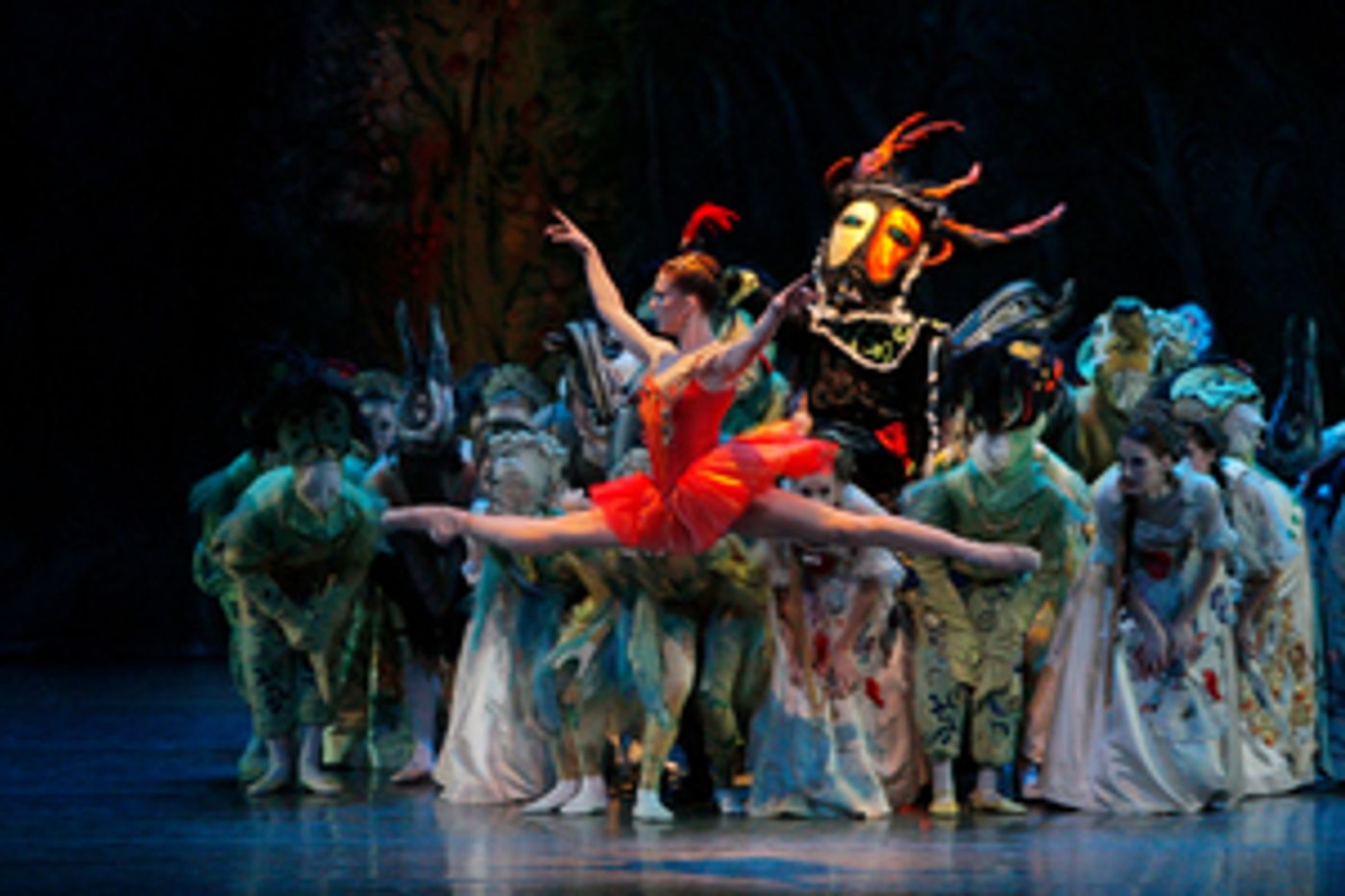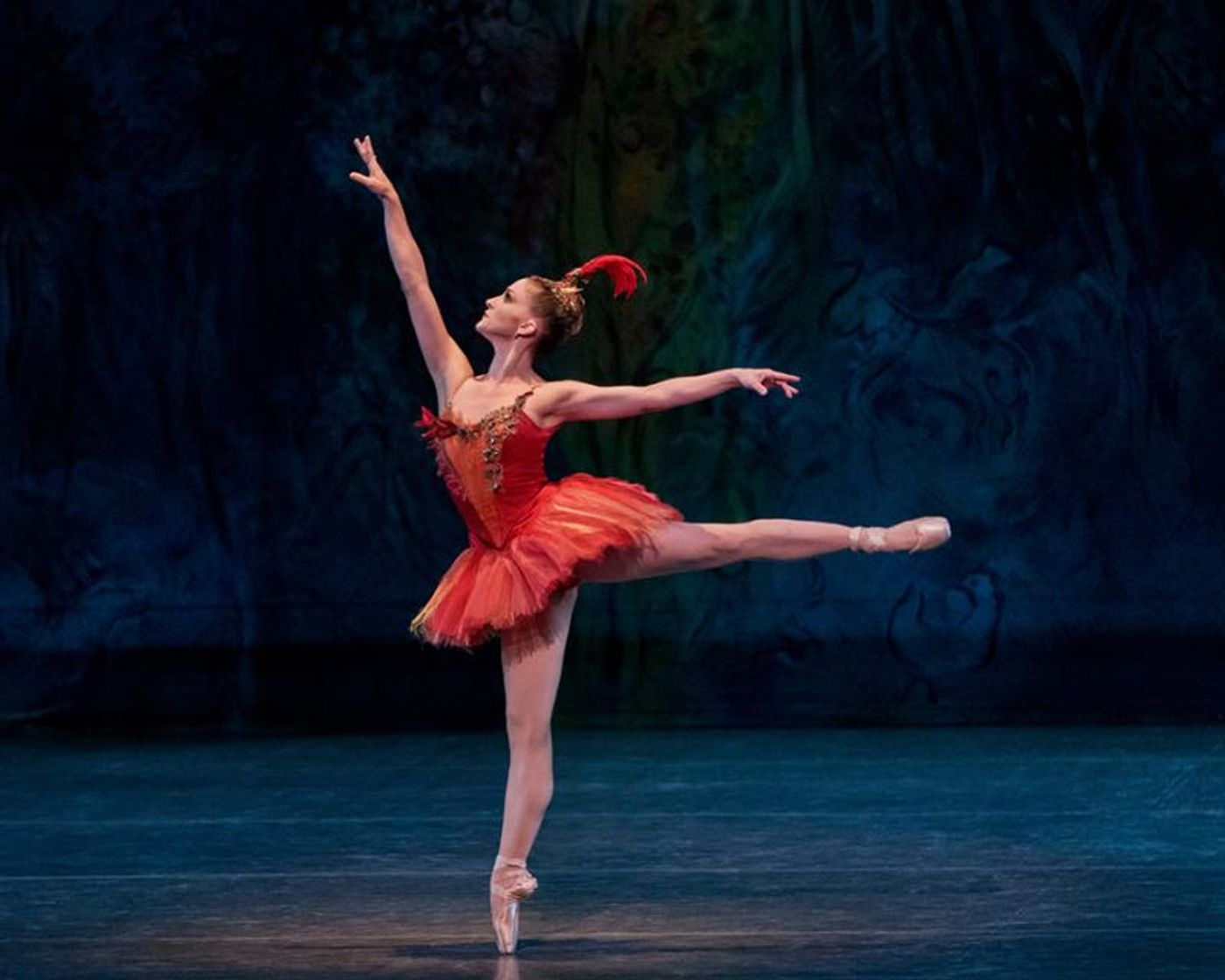BWW Dance: Firebird Redeems a Drowsy Night at City Ballet

Paul Kolnik; photographer
Balanchine maintained a no-star policy during his lifetime. His ballets were greater attractions than any individual dancer, and if those ballets failed, he'd simply jettison the clunker and choreograph a new one. As with politics and the economy, in ballet, "It's the choreography, stupid". Though some ballet lovers have resisted this rationale, even they would agree that what calls one back to State Theater season after season is the Balanchine repertoire.
If every featured dancer at City Ballet quit tomorrow, ticket buyers would still show up so long as Balanchine's masterpieces were on the bill. A ballet company's fortunes rise and fall according to its choreographic riches, which makes one worry after seeing two early Justin Peck ballets programmed back to back.
In Creases is the first ballet that Peck choreographed for the company. Dancers dart towards and away from each other out of a circle repeatedly before filtering into a progression line, one after another. At times they peel off, marching across the stage with their arms raised in a classic fencing "en-garde" position, or face the audience in a long line, one behind the other, and begin a canon of alternating movements. Much like Philip Glass' Four Movements for Two Pianos--excellently played by Elaine Chelton and Alan Moverman--it was easy to absorb and went nowhere. Similarly, Belles-Lettres, the program's opening Peck ballet, matched the pretty effect of Cesar Franck's Solo de piano avec accompagnement de quintette a cordes, without considering its romantic longing. Its choreographic structure was similar to In Creases, but added more partnering for its couples as well a solo of virtuoso turning sequences for Anthony Huxley. It felt like watching two very similar ballets with different music.
The difference between the two pieces was with Huxley who, with four couples dancing in counterpoint to his solos, was left the odd man out. While pretty and sometimes clever in how they resolved what might have been clunky partnering, In Creases and Belles-Lettres were most notable for showcasing their youngest corps men's ease with Peck's partnering and darting movement; bravo Victor Abreu and Gilbert Bolden III on solid partnering, and LaJeromeny Brown and Huxley on the solos. Peck has made stronger work since these two pieces premiered. As with Balanchine's Danses Concertantes, watching early choreographic sketches offers minimal rewards.

Paul Kolnik; photographer
Hallelujah then for Balanchine's Firebird (with ensemble staging tackled by Jerome Robbins), an early masterwork of dance and thatre. Ashley Bouder starred as the eponymous creature. A workhorse ballerina, she overcomes her less than Bolshoi-perfect attributes with an astounding technique that eclipses anything her more bodily gifted colleagues can accomplish. Make no mistake, her body is fine, but it lacks the contortionist effect that is currently en vogue.
While early reports of her return to Firebird have been less than stellar, at the performance I attended she was a blazing wonder, imbuing her movement quality with a sensuousness unlike anything I've seen from her in over 20 years. She was less angular in her port de bras than serpentine, with shades of "swan arms", though without evoking the Swan Queen. She avoided the trap of sloppy fluidity with a sharp line of attack that stopped, hovered, and changed direction, signaling a new consideration. This was an intelligent Firebird, well aware of her powers and how to deploy them to maximum effect.
As to the technical demands, they are well with in Bouder's reach. Happily, she pressed past her plum line to attain a consistently lovely swoop in her arabesque line--never her strongest attribute--and a triumphant, thrown back head. The ending round of jetés could have held greater brio--they were consistently high and level, from beginning to end--but then this reading was less that of a Soviet-gymnast banging out tricks, than a rhythmically responsive creature testing the ground with rapidly bouréeing points.
With her first rapid bourée in place, Bouder summoned the spirit of a fluttering butterfly, then stopped on a dime to sail around. Later, after she was captured by Prince Ivan, rather than fight or recoil, she tilted her head to consider the predicament, then craned her neck to suggest a compromise. Some Firebirds are all fear; Bouder's was a negotiator. She knew that the Prince saw her as a sparkly new bangle and was confident that she could reason with him without having to kill him. "Leave me alone and I'll help you someday", she seemed to say.

Erin Baiano; photographer
The story does not tell us why the Prince has power over this exotic creature, so Bouder filled in the gaps through her assertive manner to imply that she was amused by his moxie, rather than cowed. The same fluttering brilliance that overpowers Kastchei the Wizard and his beasts could just as easily have obliterated Ivan, and yet she leaves him unscathed. Until this performance, I have never bothered to ponder why.
Firebird is a simple European fairy tale with no great moral: the hero gets the babe while a magical bird of fire does all of the work; slaying the villain, freeing his captors, and taming his beasts as she luxuriates to Stravinsky's tantric waves. In working her magic, Bouder appeared to shed her earthly coil, as she ascended to Nirvana. The ballet should end there but its gorgeous music continues for a coronation that completely underwhelms the senses with its static staging. Ivan and his Bride wed, eat, and live happily ever-after. If only the Firebird could have returned... Balanchine frequently updated his ballets for special ballerinas. Would he have found inspiration for a new ending in Bouder? One where she overthrows the kingdom and burns down the throne, à la Drogon in Game of Thrones?
One's imagination can go anywhere when offered inspiring material. Here's to more masterpieces than early sketch work.
Videos

